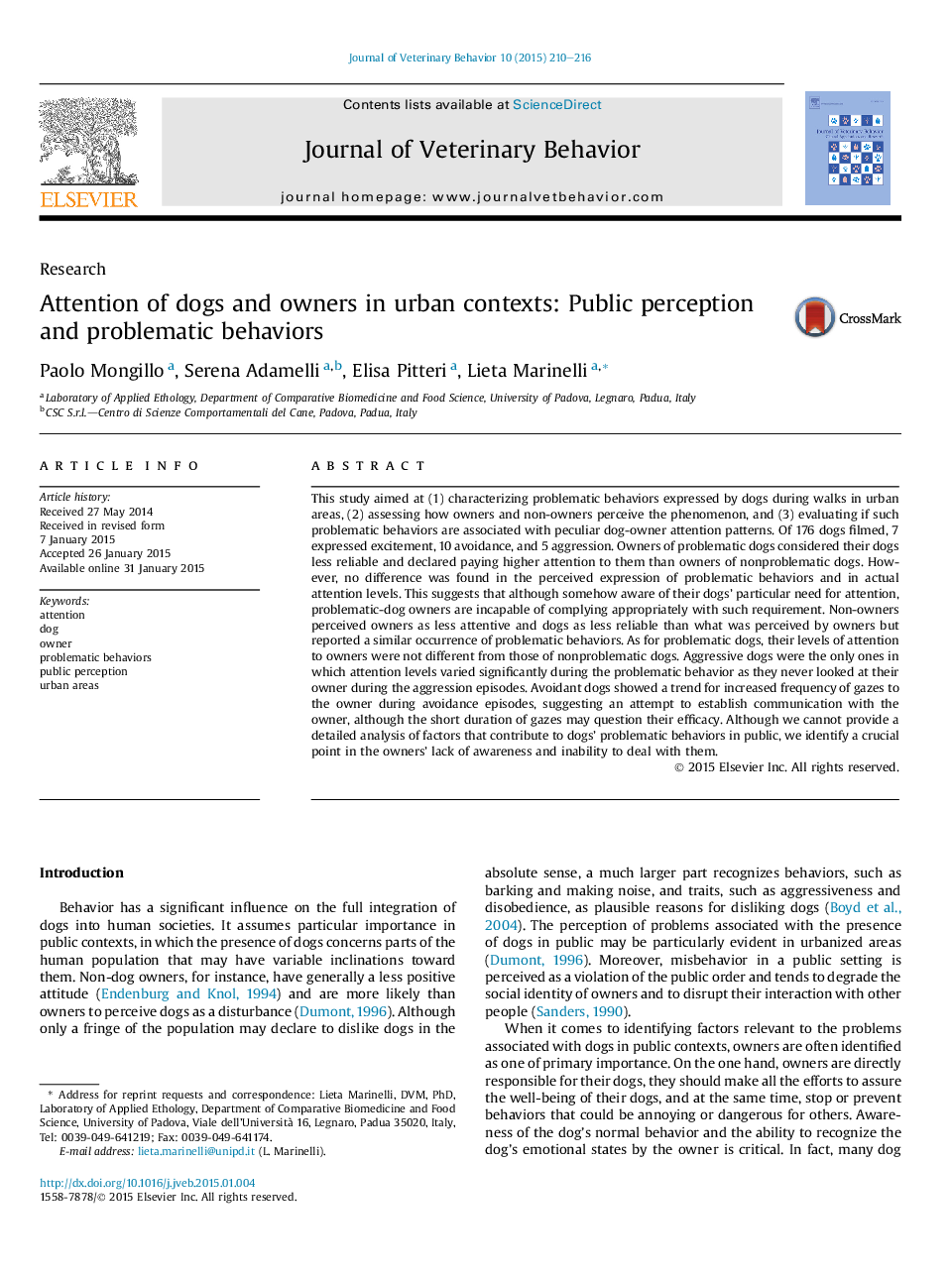| Article ID | Journal | Published Year | Pages | File Type |
|---|---|---|---|---|
| 2398666 | Journal of Veterinary Behavior: Clinical Applications and Research | 2015 | 7 Pages |
This study aimed at (1) characterizing problematic behaviors expressed by dogs during walks in urban areas, (2) assessing how owners and non-owners perceive the phenomenon, and (3) evaluating if such problematic behaviors are associated with peculiar dog-owner attention patterns. Of 176 dogs filmed, 7 expressed excitement, 10 avoidance, and 5 aggression. Owners of problematic dogs considered their dogs less reliable and declared paying higher attention to them than owners of nonproblematic dogs. However, no difference was found in the perceived expression of problematic behaviors and in actual attention levels. This suggests that although somehow aware of their dogs' particular need for attention, problematic-dog owners are incapable of complying appropriately with such requirement. Non-owners perceived owners as less attentive and dogs as less reliable than what was perceived by owners but reported a similar occurrence of problematic behaviors. As for problematic dogs, their levels of attention to owners were not different from those of nonproblematic dogs. Aggressive dogs were the only ones in which attention levels varied significantly during the problematic behavior as they never looked at their owner during the aggression episodes. Avoidant dogs showed a trend for increased frequency of gazes to the owner during avoidance episodes, suggesting an attempt to establish communication with the owner, although the short duration of gazes may question their efficacy. Although we cannot provide a detailed analysis of factors that contribute to dogs' problematic behaviors in public, we identify a crucial point in the owners' lack of awareness and inability to deal with them.
